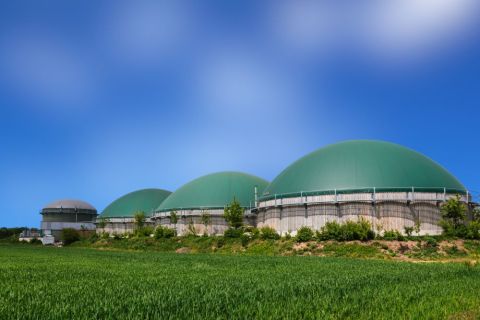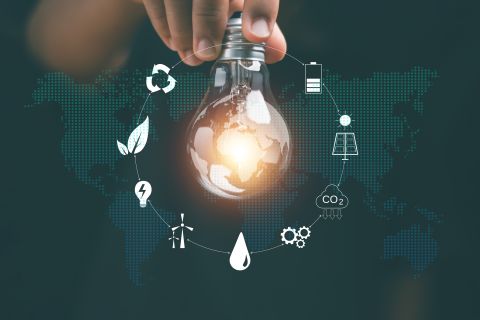
Russia-U.S. experts debate future positions as LNG exporters at APPEA 2017 in Australia.
PERTH, Western Australia—Delegates at the Australian Petroleum Production & Exploration Association Ltd. (APPEA) Conference in Perth were given a rare treat this year when the first Russian speaker at the event in 57 years debated his country’s credentials as a future LNG and gas export superpower with a U.S. expert.
The verbal sparring between Konstantin Simonov, director-general of the National Energy Security Fund and Australia Russia Dialogue, and Martin Houston, vice chairman of Tellurian, may not have replicated Cold War classics in the Fischer-Spassky, Nixon-Khrushchev mold, but it piqued the interest of Australian producers contemplating future gas export prospects.
Simonov claimed Russia, already exporting 117 billion cubic meters (Bcm) of gas to Europe, was in pole position to beat global rivals to the checkered flag in Asia with its 11 million tonnes per annum (mtpa) Sakhalin Island LNG plant, the 16 mtpa Yamal Peninsula LNG plant under construction in the Arctic and other planned projects.
Simonov predicted that Yamal LNG would ship 50% of cargoes to Europe and the remainder to Asia, deploying revolutionary LNG icebreaker vessels.
“60% of Yamal Peninsula is in the portfolio of global gas traders, which is why we still do not know what will be the final destination,” he said.
However, with the Power Siberia Pipeline delivering 28 mtpa capacity to China, plans to construct the Siberia-2 Pipeline and Gazprom negotiating additional supplies to China, Simonov said Russia had the potential to produce “a huge amount of gas.” He cited 130 mtpa for export.
Simonov said a potential pipeline from Sakhalin to China was likely to be sanctioned, and that within three years Russia could be exporting 70 mtpa to 75 mtpa to Asia at an average price of $5.2 million British thermal units (MMBtu), based on 2016 prices. He said the average export to Europe was $4.2/MMBtu, “so this [Russian] gas is very competitive.”
“Even in 2016 we see a serious battle [developing] between Russian pipeline gas and USA LNG,” Simonov added.
He claimed that American LNG cargoes to Asia would cost about $8.50, similar to Australian exports, and that Russian pipeline gas per capex unit was cheaper than Australian LNG.
Houston disputed Simonov’s figures, saying, “we have heard about the advantage of Russia. Now let me give you the alternative [U.S.] perspective. It’s about delivering low-cost LNG to Asia and giving you a bit of a window into how we think about cost structures going forward.
“We believe the USA will be the long-term, low-cost supplier with lower volatility driven by low-cost gas.”
Houston said to meet a predicted shortfall of global supplies between 2022 and 2025, financial investment decisions for LNG export terminals would need to occur within the next 12 months and that 100 million tonnes of new liquefaction gas would be required to meet demand by 2025.
He said the Permian Basin was producing 25 Bcf/d of associated new gas “at zero cost and it’s got to be disposed of.”
“If you look at the Gulf Coast LNG picture, you know what you are getting with a low-cost resource base, labor and financing costs and a regulatory time line that you can hang your hat on. We also know that we are not getting exploration risk; the gas is there without question. If we build [LNG export facilities], as we say, the economics are ours to win or lose.
“What we are saying is that we can be in the boat at just under $2.50/MMBtu. The capital has not made a return at that point, but we have covered our costs, all our opex is covered, and that makes us dangerously competitive,” he said.
“[Our] model is different from Henry Hub, but competing into Europe with pipeline gas, it is a different way of looking at the world.”
Recommended Reading
DNV: Emissions Fall, Solar Soars, Oil Demand Shrinks 35% by 2050
2024-10-09 - The Norwegian risk manager spotlights the good and not so good in its latest global energy transition outlook, including predictions that half of all vehicles sold worldwide by 2031 will be electric.
Politics Over Returns? Private Equity’s Renewables, Hydrocarbon Challenge
2024-10-03 - Private equity is a leader in clean energy investment, but it hasn’t been easy.
Continued RNG Growth Could Undercut Shale Dominance
2024-09-13 - The drive to seek out lower emissions fuels is leading to a surge in RNG projects.
Brookfield Targets More Renewable Power Growth Opportunities
2024-09-11 - Brookfield Asset Management agreed to invest up to $1.1 billion in efuels producer Infinium as it seeks additional growth opportunities.
Johnson Matthey: Syngas Offers Path to Low-carbon Fuels, Hydrogen
2024-09-27 - With syngas, chemical makers like Johnson Matthey have hit a sweet spot in producing no- and low-carbon ammonia, hydrogen or sustainable aviation fuel.
Comments
Add new comment
This conversation is moderated according to Hart Energy community rules. Please read the rules before joining the discussion. If you’re experiencing any technical problems, please contact our customer care team.






